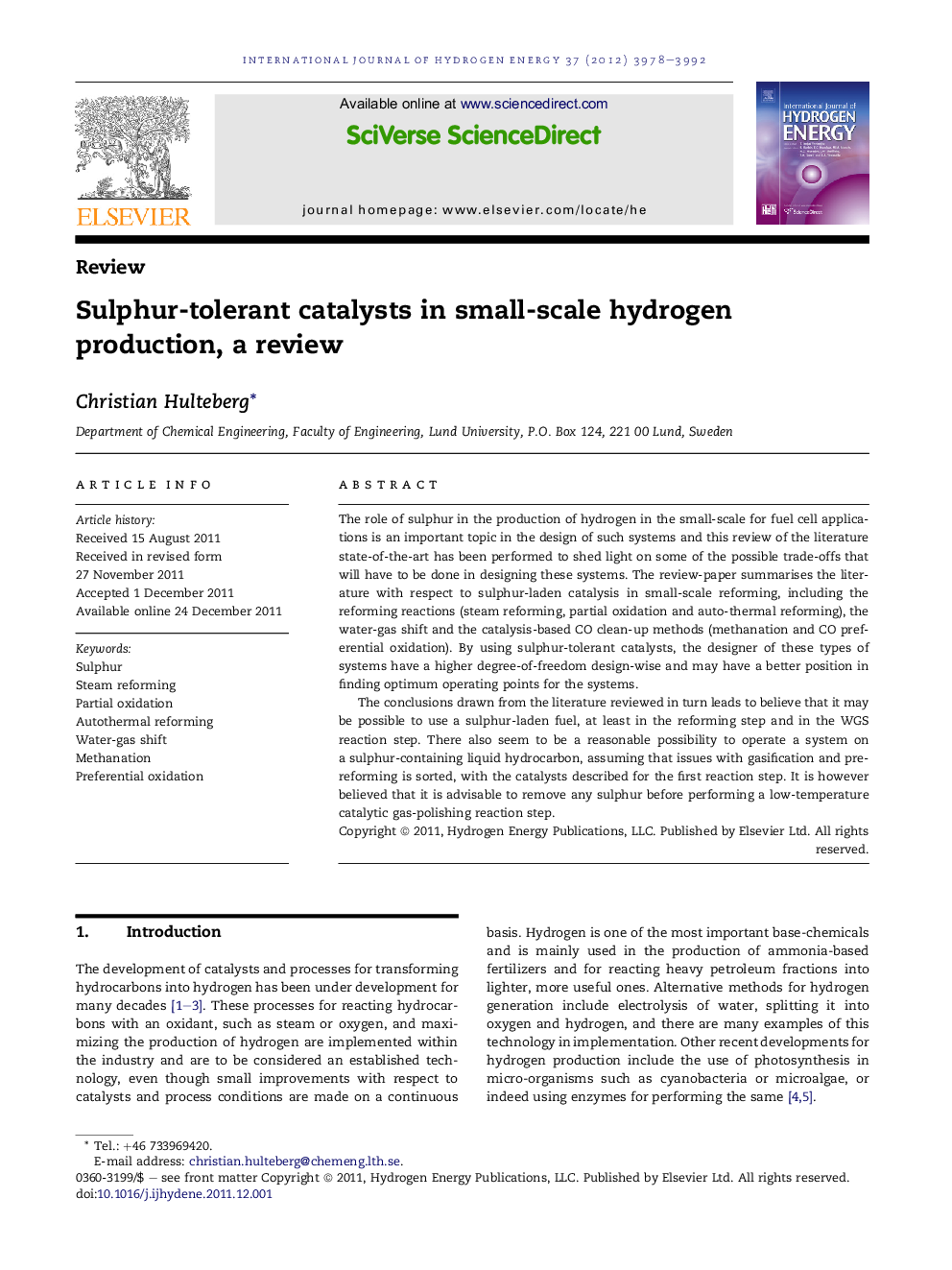| Article ID | Journal | Published Year | Pages | File Type |
|---|---|---|---|---|
| 1275450 | International Journal of Hydrogen Energy | 2012 | 15 Pages |
The role of sulphur in the production of hydrogen in the small-scale for fuel cell applications is an important topic in the design of such systems and this review of the literature state-of-the-art has been performed to shed light on some of the possible trade-offs that will have to be done in designing these systems. The review-paper summarises the literature with respect to sulphur-laden catalysis in small-scale reforming, including the reforming reactions (steam reforming, partial oxidation and auto-thermal reforming), the water-gas shift and the catalysis-based CO clean-up methods (methanation and CO preferential oxidation). By using sulphur-tolerant catalysts, the designer of these types of systems have a higher degree-of-freedom design-wise and may have a better position in finding optimum operating points for the systems.The conclusions drawn from the literature reviewed in turn leads to believe that it may be possible to use a sulphur-laden fuel, at least in the reforming step and in the WGS reaction step. There also seem to be a reasonable possibility to operate a system on a sulphur-containing liquid hydrocarbon, assuming that issues with gasification and pre-reforming is sorted, with the catalysts described for the first reaction step. It is however believed that it is advisable to remove any sulphur before performing a low-temperature catalytic gas-polishing reaction step.
► It is plausible to produce hydrogen with sulphur present. ► This is true for steam reforming, partial oxidation, auto-thermal reforming and shift. ► The catalytic CO clean-up is believed to be difficult in sulphur-laden gas streams.
